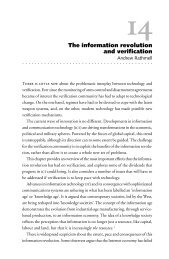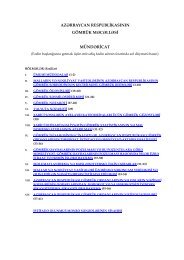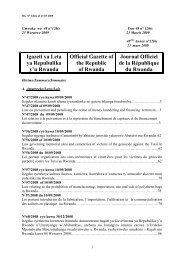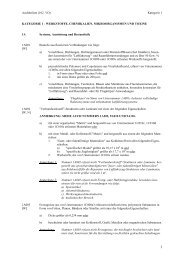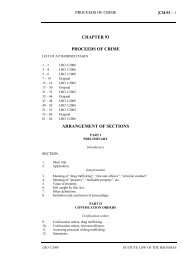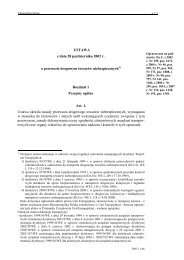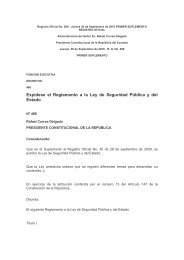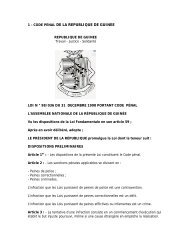Annex I - VERTIC
Annex I - VERTIC
Annex I - VERTIC
Create successful ePaper yourself
Turn your PDF publications into a flip-book with our unique Google optimized e-Paper software.
▼M2<br />
16. ‘Cemented tungsten carbide’ does not include cutting and forming tool<br />
materials consisting of tungsten carbide/(cobalt, nickel), titanium carbide/<br />
(cobalt, nickel), chromium carbide/nickel-chromium and chromium carbide/<br />
nickel.<br />
17. ‘Technology’ specially designed to deposit diamond-like carbon on any of<br />
the following is not controlled:<br />
magnetic disk drives and heads, equipment for the manufacture of disposables,<br />
valves for faucets, acoustic diaphragms for speakers, engine parts for<br />
automobiles, cutting tools, punching-pressing dies, office automation<br />
equipment, microphones or medical devices or moulds, for casting or<br />
moulding of plastics, manufactured from alloys containing less than 5 %<br />
beryllium.<br />
18. ‘Silicon carbide’ does not include cutting and forming tool materials.<br />
19. Ceramic substrates, as used in this entry, does not include ceramic materials<br />
containing 5 % by weight, or greater, clay or cement content, either as<br />
separate constituents or in combination.<br />
Table — Deposition Techniques — Technical Note<br />
Processes specified in Column 1 of the Table are defined as follows:<br />
a. Chemical Vapour Deposition (CVD) is an overlay coating or surface modification<br />
coating process wherein a metal, alloy, ‘composite’, dielectric or<br />
ceramic is deposited upon a heated substrate. Gaseous reactants are<br />
decomposed or combined in the vicinity of a substrate resulting in the<br />
deposition of the desired elemental, alloy or compound material on the<br />
substrate. Energy for this decomposition or chemical reaction process may<br />
be provided by the heat of the substrate, a glow discharge plasma, or ‘laser’<br />
irradiation.<br />
NB 1 CVD includes the following processes: directed gas flow out-of-pack<br />
deposition, pulsating CVD, controlled nucleation thermal deposition<br />
(CNTD), plasma enhanced or plasma assisted CVD processes.<br />
NB 2 Pack denotes a substrate immersed in a powder mixture.<br />
NB 3 The gaseous reactants used in the out-of-pack process are produced<br />
using the same basic reactions and parameters as the pack cementation<br />
process, except that the substrate to be coated is not in contact<br />
with the powder mixture.<br />
b. Thermal Evaporation-Physical Vapour Deposition (TE-PVD) is an overlay<br />
coating process conducted in a vacuum with a pressure less than 0,1 Pa<br />
wherein a source of thermal energy is used to vaporise the coating material.<br />
This process results in the condensation, or deposition, of the evaporated<br />
species onto appropriately positioned substrates.<br />
The addition of gases to the vacuum chamber during the coating process to<br />
synthesise compound coatings is an ordinary modification of the process.<br />
The use of ion or electron beams, or plasma, to activate or assist the coating’s<br />
deposition is also a common modification in this technique. The use of<br />
monitors to provide in-process measurement of optical characteristics and<br />
thickness of coatings can be a feature of these processes.<br />
2009R0428 — EN — 15.06.2012 — 002.001 — 144




